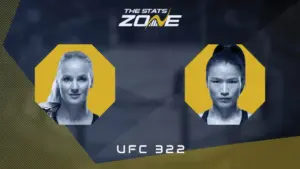
While the Coalition grapples with public internal discord, a lesser-known political entity, One Nation, has quietly gained traction among voters. This shift is attributed to One Nation’s “laser-focused” agenda, appealing to those disenchanted by the Coalition’s current state.
The latest Resolve poll for Nine’s newspapers indicates that the Coalition managed a modest two percent increase in its primary vote, rising from a low of 27 percent in September. However, One Nation has maintained a steady 12 percent, marking its highest support level since the last federal election.
Voter Discontent and Leadership Challenges
According to Jim Reed of Resolve, the exodus of voters from the Coalition to One Nation is largely due to Opposition Leader Sussan Ley’s failure to address fundamental issues amidst ongoing infighting over net-zero policies. The situation has been exacerbated by Nationals MP Barnaby Joyce’s flirtations with defecting to One Nation.
“The Coalition are viewed as disunited and focused on themselves, so they’ve got to get their house in order in terms of leadership and unity, competence in prosecuting a case against Labor and having an alternative policy suite,” Reed told 9news.com.au.
The Coalition’s inability to present a unified front has led to speculation about Ley’s leadership, with Angus Taylor publicly dismissing rumors of a potential leadership challenge. Meanwhile, Joyce’s potential departure from the Nationals to join One Nation, driven by policy disagreements and opposition to net-zero, threatens to further fragment the Coalition’s voter base.
One Nation’s Strategic Positioning
One Nation’s rise in popularity is attributed to its clear policy focus, particularly on immigration and energy, areas where the party has successfully highlighted government weaknesses. This strategic positioning has resonated with voters seeking alternatives to the major parties.
Monash University’s Associate Professor Zareh Ghazarian noted that voters are increasingly willing to support non-major party candidates when they perceive division within major parties. “The Liberal Party seems to be really struggling with what it wants to be in Australian politics,” he said.
“You’ve got other parties, for example, like One Nation, which I think has become more prominent because they’ve got a very laser-focused policy agenda, and people know what that party is seeking to achieve in a policy sense.”
Shifting Political Landscape
The rise of minor parties and independents is a growing trend in Australian politics. Currently, they hold 20 seats in the Senate, closely trailing the Coalition’s 27 and Labor’s 29. In the House of Representatives, while Labor maintains a strong majority, 10 independents have retained their seats, solidifying their status as viable alternatives.
These independents played a pivotal role in the 2022 federal election, capturing several traditionally safe Liberal seats and contributing to the largest crossbench in Australian history. Ghazarian emphasized that minor parties and independents are perceived as more effective in addressing specific policy concerns than the major parties.
“There is fragility. There is a bit of brittleness within the party system and within the electoral system, as in voter preferences,” he said. “And it is a warning to the major parties that they must work very hard to maintain the support that they have and to potentially build on it.”
Future Implications for Major Parties
Despite the gains made by minor parties, Reed cautioned that major parties still dominate the primary vote, with Labor at 33 percent and the Coalition at 29 percent. The political center remains the battleground where elections are ultimately decided.
“We’ve got to remember that One Nation is still very much a minor party and that the likes of Hanson and Joyce are still not well-liked, but they are effectively appealing to a minority and making gains because of that,” Reed noted.
The evolving political landscape in Australia underscores the need for major parties to adapt and address voter concerns or risk losing further ground to minor parties and independents.







